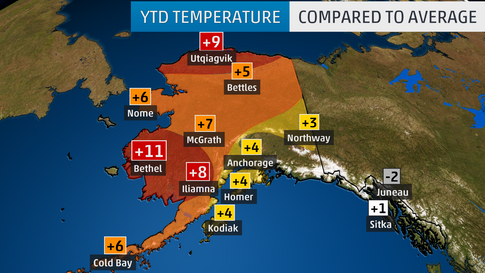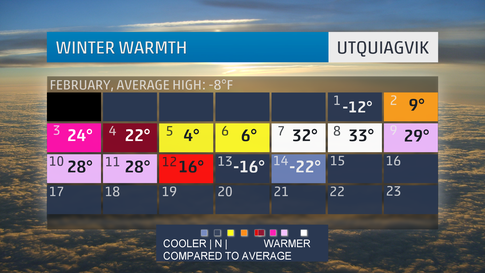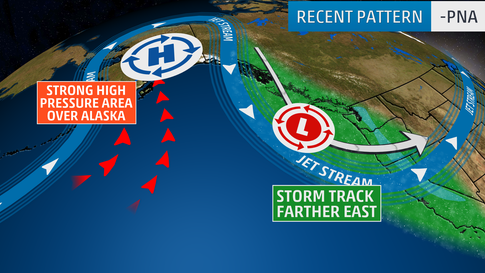Most of Alaska has had a warm start to 2019. Temperatures have been 5 to 15 degrees above average in Alaska. Only the Alaska panhandle has experienced average temperatures. A stormy pattern has led ice to break up in the Bering Sea.

Temperatures soared to near the freezing mark late last week at the nation’s northernmost town of Utquagvik, formerly known as Barrow, Alaska. Temperatures held for several days in the 20s and 30s, which is between 30 and 40 degrees above average.And this isn’t the town’s first heat wave this year.

In fact, temperatures in Utqiagvik have been running well above average since the beginning of the year. Most of Alaska has had a warm start to 2019. Only the Alaska panhandle has experienced average temperatures.
These warmer temperatures combined with increased storminess during the last couple of weeks have caused sea ice to retreat northward and thin.
Bering #seaice extent from @NSIDC data has fallen by more than 25% since Jan 25th. @NWSAlaska hi-res analysis shows lots of open water in southern Norton Sound & lower concentrations in/near Kotzebue Sound. Stormy pattern continues this week. #akwx #Arctic @Climatologist49 @Zlabe pic.twitter.com/aJf5CV26v1
— Rick Thoman (@AlaskaWx) February 10, 2019
Open water has even been observed near Utqiagvik due to the recent weather pattern.
Temperatures have fallen back into the minus 20s in recent days, but another wave of comparative warmth — teens above zero — is on the way.
The Why Behind the Warm and Storm
The warmth over Alaska has been driven by a big bulge in the jet stream as far north as the Arctic Circle.
The ridge in the jet stream is a symptom of the negative phase of the Pacific North American pattern, which has been holding over the continent for several weeks.

The big northward bump in the jet stream has also caused storms that do cross the northern Pacific to ride into northern Alaska and the Arctic Circle.
Each storm that rides northward along the jet stream brings with it a warm side on its eastern flank, similar to storms elsewhere in the United States. Storms have been moving through far eastern Russia recently, which puts western and northern Alaska in the warm pocket.











